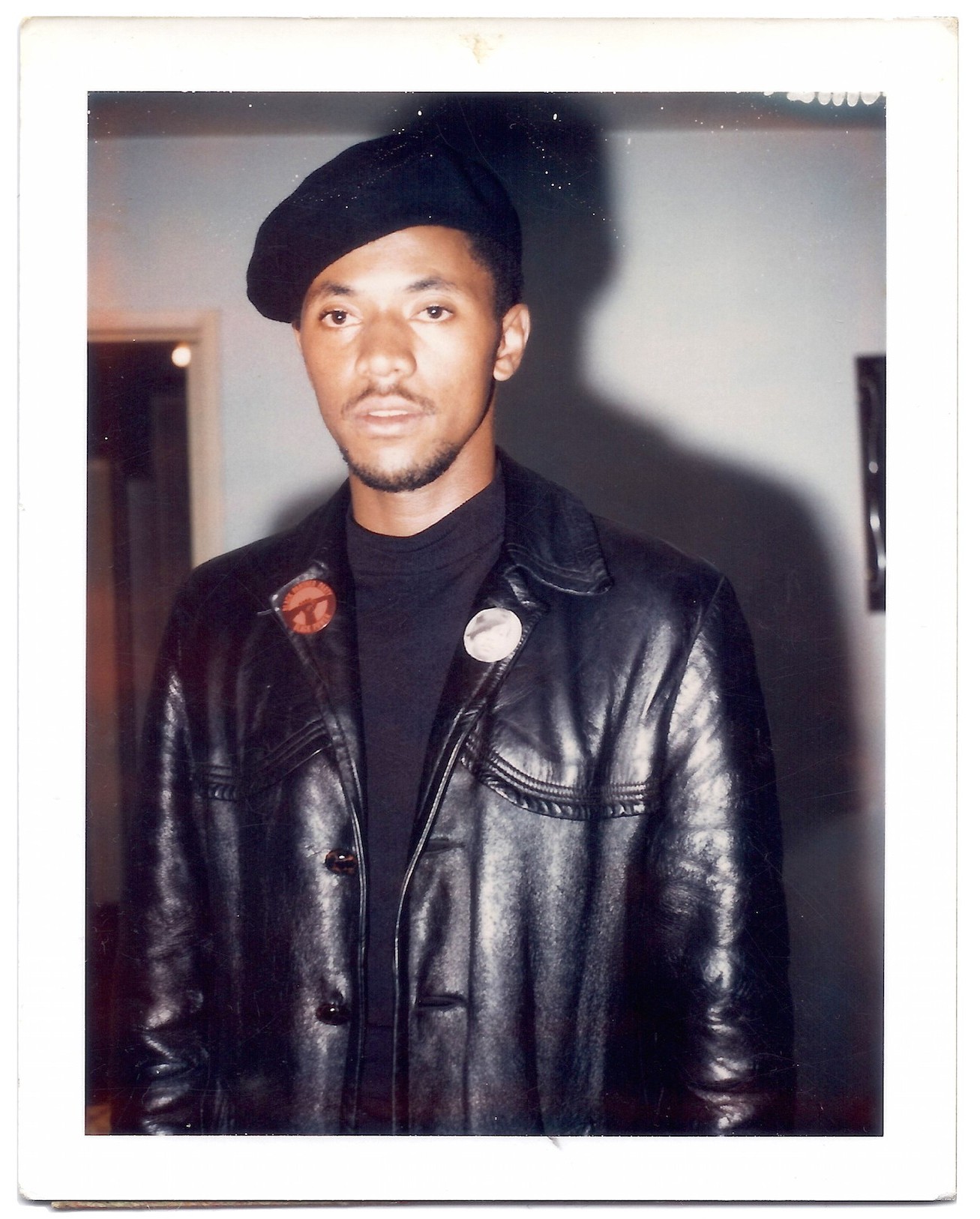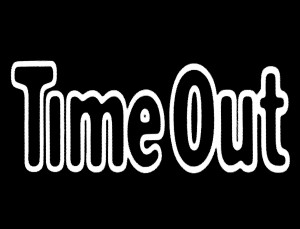Do Not Destroy

Untitled (Dad, 1968), 2016
Do Not Destroy
Sadie Barnette
Curated by Alexandra Giniger
Exhibition dates: January 18 – February 18, 2017
Opening Reception: Wednesday, January 18, 2017 | 6 – 8 pm
Baxter St at CCNY is pleased to present a solo exhibition of work by Sadie Barnette, curated by Alexandra Giniger. Barnette, a 2015 Artist-in-Residence at the Studio Museum in Harlem, returns to present Do Not Destroy, her first solo exhibition in New York City. The show features new works using as primary source material the 500-page FBI surveillance file on Barnette’s father, Rodney Barnette, who founded the Compton, California, chapter of the Black Panther Party in 1968. The multi-media works embody an intergenerational father-daughter conversation, uniting the personal and the political.
An installation entitled “My Father’s FBI File: Part II” is the second iteration of a project currently featured in the Oakland Museum of California’s All Power to the People: Black Panthers at 50. Hundreds of pages of the extensive FBI file cover one long wall of the storefront gallery. Splashes of pink spray paint and rhinestones adorn the black-and-white file pages, which are punctuated with officious markings, the redacted names of ten informants, hand-written margin notes, and a stamp on the first page of the file reading, “Historical Value/Do Not Destroy.” Barnette’s pointed use of pink and glitter speaks to “girldom” in her father-daughter conversation and puts her unique mark on the FBI documents as a way of claiming power. Utilizing these practices in “My Father’s FBI File: Part II,” Barnette creates a historical tapestry through which she reclaims her father’s story from the framework of repressive forces intent on dismantling the Black Panthers, and boldly presents an authentic telling of her family tree.
Do Not Destroy includes a diptych of massively enlarged Polaroid portraits of the artist’s father in the late 1960s. In one image, he is 21 years of age and, having been drafted into the Army, stands earnestly in his uniform, medals, and polished boots in the family living room. In the second photograph, he dons the classic “Panther uniform” of a leather jacket and black beret, the army medals replaced with Black power buttons. This before-and-after pairing of photos connects the Vietnam war to which he was sent and the war waged by the police on the Black community to which he returned; it was this war he committed to organizing against by joining the Black Panther Party. These histories – personal, Black, American, political – cannot and will not be destroyed.
Sadie Barnette (b. 1984 Oakland, CA) earned her BFA from CalArts and her MFA from the University of California, San Diego. Her work has been exhibited throughout the United States and internationally at venues including The Studio Museum in Harlem, the California African American Museum, the Oakland Museum of California, The Mistake Room, Self Help Graphics, Charlie James Gallery, Ever Gold Projects, Papillion Gallery, Jenkins-Johnson Gallery, and Goodman Gallery in Johannesburg, South Africa. Barnette has been featured in The New York Times, The Los Angeles Times, The Guardian UK, Artforum, Artillery Magazine, The Fader, and SFAQ, among other publications. Her work is in the permanent collections of museums such as The Pérez Art Museum in Miami, the California African American Museum, and The Studio Museum in Harlem. In 2017 Barnette will have a solo exhibition at the Manetti Shrem Museum of Art at the University of California at Davis. She lives and works in Oakland, CA and Compton, CA.
Alexandra Giniger is an independent curator and Director of Rachel Uffner Gallery. After receiving her Master’s degree from Georgetown University, with a concentration in Modern & Contemporary Art Business from Sotheby’s Institute of Art (London), Alexandra managed the Brooklyn-based studios of world-renowned artist, Wangechi Mutu, until moving to Greene Naftali Gallery as Managing Director. Alexandra is a member of the MoCADA Ambassadors Circle, AFRICA’SOUT Advisory Committee, Amref Health Africa Art Ball Committee, and co-chaired the 2016 benefit for artist workspace, Recess. She organized Dare You To Look: Radical Realizations in Portraiture, the inaugural exhibition of Burning in Water Art (Nov. 2015 – Jan. 2016). In an effort to combine her varied experiences within the art world and beyond, Alexandra founded Oyster Knife, a global arts consultancy firm specializing in promoting and nurturing the careers of artists of color. Alexandra serves as Chief Creative Officer of this venture.
Oakland-based artist Sadie Barnette’s work explores the covert government tactics used to “neutralize” the Black Panther Party, and offers up a very personal father-daughter conversation. Two years after spending time in the Studio Museum’s artist residency program in Harlem, Barnette has now returned to New York with her installation Do Not Destroy. The exhibition is an extension of her current work showing in the Oakland Museum exhibition All Power to the People: Black Panthers at 50. It features the 500-page FBI surveillance file on Sadie’s father, Rodney Barnette, who founded the Compton chapter of the Panthers. In Sadie’s first solo New York show, she breaks up the severity of these documents with unabashed “girldom.” Pink spray paint, glitter, and other girlish details juxtapose officious markings and eerie intelligence notes. i-D.
 The exhibit has been cathartic for both her and her father. “I think he feels a new sense of freedom by exposing these files that were meant to suppress him,” she said. “While we’re celebrating the 50th anniversary of the Black Panthers, I think it’s really important to remember that there are a lot of people who are still imprisoned because of their activism. It’s always important to question the government, because the government works for the people — not the other way around.” NY Magazine’s The Cut.
The exhibit has been cathartic for both her and her father. “I think he feels a new sense of freedom by exposing these files that were meant to suppress him,” she said. “While we’re celebrating the 50th anniversary of the Black Panthers, I think it’s really important to remember that there are a lot of people who are still imprisoned because of their activism. It’s always important to question the government, because the government works for the people — not the other way around.” NY Magazine’s The Cut.
“We requested recently his FBI file through the Freedom of Information Act,” Sadie tells me. Her show, he r first solo in New York, coincides with commemorative events to honor the 50th anniversary of the founding of the Black Panther Party. “It took four years to get the files, and now I’m reclaiming them, and repurposing them, to tell my dad’s story, and to tell the story of the government surveillance, and how they really dismantled the Black Panther Party.” Artsy.
r first solo in New York, coincides with commemorative events to honor the 50th anniversary of the founding of the Black Panther Party. “It took four years to get the files, and now I’m reclaiming them, and repurposing them, to tell my dad’s story, and to tell the story of the government surveillance, and how they really dismantled the Black Panther Party.” Artsy.
 Sadie Barnette’s reworking of the files that the FBI had covertly kept for years on her father resembles an act of vandalism—an invaded home, reshuffled and spattered and spilled-on papers—as much as it does a daughter’s loving, slightly coy stamp on the typewritten documentation of her father’s life. The work (which is also on view in slightly different format at the Oakland Museum of California’s “All Power to the People: Black Panthers at 50”) is a re-examination, a reclaiming. This is ours now, this is mine, her embellishments seem to insist; the fierce, rebellious energy of a crayoned wall or a graffiti-tagged billboard, a sort of Pink Panther mark on a Black Panther life. “I wanted to repair some of the trauma,” Sadie said last week by phone. Vogue Magazine.
Sadie Barnette’s reworking of the files that the FBI had covertly kept for years on her father resembles an act of vandalism—an invaded home, reshuffled and spattered and spilled-on papers—as much as it does a daughter’s loving, slightly coy stamp on the typewritten documentation of her father’s life. The work (which is also on view in slightly different format at the Oakland Museum of California’s “All Power to the People: Black Panthers at 50”) is a re-examination, a reclaiming. This is ours now, this is mine, her embellishments seem to insist; the fierce, rebellious energy of a crayoned wall or a graffiti-tagged billboard, a sort of Pink Panther mark on a Black Panther life. “I wanted to repair some of the trauma,” Sadie said last week by phone. Vogue Magazine.
![]() In this project, Sadie, who works in photography, drawing, installation, and bookmaking, located a means of exploring her own identity and family history that builds on her larger practice. Barnette’s work explores every day mundanity but identifies those moments that make the ordinary extraordinary, or even extra-terrestrial. The documents are literally a day to day recollection of Rodney’s activities, but they also illustrate a man imbued with the strength to continue to fight for what he believes. Those moments captivate Sadie, and her art is in reframing them and emphasizing her viewing of them. It is an art of relation more than of creation. “As an artist, people tell you the way you look at things matters. So you do it,” says Sadie. “A lot of people don’t get to trust that voice as much, because they aren’t looking to collect those moments.” Forbes.
In this project, Sadie, who works in photography, drawing, installation, and bookmaking, located a means of exploring her own identity and family history that builds on her larger practice. Barnette’s work explores every day mundanity but identifies those moments that make the ordinary extraordinary, or even extra-terrestrial. The documents are literally a day to day recollection of Rodney’s activities, but they also illustrate a man imbued with the strength to continue to fight for what he believes. Those moments captivate Sadie, and her art is in reframing them and emphasizing her viewing of them. It is an art of relation more than of creation. “As an artist, people tell you the way you look at things matters. So you do it,” says Sadie. “A lot of people don’t get to trust that voice as much, because they aren’t looking to collect those moments.” Forbes.
![]() For Sadie Barnette’s recent body of work, she sifted through FBI documents kept on her father, Rodney Barnette, a founder of the Compton chapter of the Black Panther Party. Her exhibition Do Not Destroy will feature hundreds of these pages, which the artist has covered with pink rhinestones, glitter, and paint, as she takes her father’s story into her own hands. She has also enlarged Polaroid portraits of him, pre and post his involvement with the Black Panther party, whose story is not fully mined and not quite over. Hyperallergic.
For Sadie Barnette’s recent body of work, she sifted through FBI documents kept on her father, Rodney Barnette, a founder of the Compton chapter of the Black Panther Party. Her exhibition Do Not Destroy will feature hundreds of these pages, which the artist has covered with pink rhinestones, glitter, and paint, as she takes her father’s story into her own hands. She has also enlarged Polaroid portraits of him, pre and post his involvement with the Black Panther party, whose story is not fully mined and not quite over. Hyperallergic.
 Multimedia artist Sadie Barnette looks back on the structures of oppression that her father, Black Panther Rodney Barnette, faced in ’60s Compton, California. Featuring a 500-page FBI surveillance file on her father-—embellished here with rhinestones—this radical exhibition feels vital for Black History Month. Time Out New York.
Multimedia artist Sadie Barnette looks back on the structures of oppression that her father, Black Panther Rodney Barnette, faced in ’60s Compton, California. Featuring a 500-page FBI surveillance file on her father-—embellished here with rhinestones—this radical exhibition feels vital for Black History Month. Time Out New York.
![]() Artist Sadie Barnette’s first solo exhibition, Do Not Destroy, illuminates what government surveillance looklike when the state declares you an enemy: It is invasive, indiscriminately thorough, and ruthlessly unjust. This much is clear when you walk into the Baxter St. gallery at the Camera Club of New York and are visually assaulted by the dearth of documents—culled from the files the FBI maintained on Barnette’s father Rodney, who was the founder of the Black Panther Compton chapter—barely readable, covering the long, main wall. Broadly.
Artist Sadie Barnette’s first solo exhibition, Do Not Destroy, illuminates what government surveillance looklike when the state declares you an enemy: It is invasive, indiscriminately thorough, and ruthlessly unjust. This much is clear when you walk into the Baxter St. gallery at the Camera Club of New York and are visually assaulted by the dearth of documents—culled from the files the FBI maintained on Barnette’s father Rodney, who was the founder of the Black Panther Compton chapter—barely readable, covering the long, main wall. Broadly.
 Sadie is an acclaimed visual artist whose work has been seen across the world. While the FBI files were obviously an important artifact for their family, she also knew they would make great fodder for a new project. With her father’s blessing, Sadie combed through the files to find the most striking pages, and she found different ways to repurpose them — and the discordant story they told. She tagged some pages with pink and black spray paint like graffiti, while others were combined with her original artwork. Upworthy.
Sadie is an acclaimed visual artist whose work has been seen across the world. While the FBI files were obviously an important artifact for their family, she also knew they would make great fodder for a new project. With her father’s blessing, Sadie combed through the files to find the most striking pages, and she found different ways to repurpose them — and the discordant story they told. She tagged some pages with pink and black spray paint like graffiti, while others were combined with her original artwork. Upworthy.
 “Dear 1968…From 1984,” reads a graphite drawing in Sadie Barnette’s current exhibition Do Not Destroy at Baxter Street at CCNY. The drawing appears as if written as a warning or a love letter from George Orwell’s dystopian (and, increasingly documentary) novel 1984. Orwell’s 1984, even though published in 1949, could not feel more prescient today. Or in 1968, for that matter. The drawing, which resembles a print with its flawless script, refers to the FBI surveillance of Barnette’s father–Rodney Barnette–who founded the Compton chapter of the Black Panther Party in 1968. Filthy dreams.
“Dear 1968…From 1984,” reads a graphite drawing in Sadie Barnette’s current exhibition Do Not Destroy at Baxter Street at CCNY. The drawing appears as if written as a warning or a love letter from George Orwell’s dystopian (and, increasingly documentary) novel 1984. Orwell’s 1984, even though published in 1949, could not feel more prescient today. Or in 1968, for that matter. The drawing, which resembles a print with its flawless script, refers to the FBI surveillance of Barnette’s father–Rodney Barnette–who founded the Compton chapter of the Black Panther Party in 1968. Filthy dreams.
 “Looking at things through the lens of the familial or the personal has always been something important in my work,” explains Barnette. “In this example, there is a sense of a ‘daddy’s girl’ looking to her father and hero, a decorated Vietnam veteran and a community organizer. I think my family history is African-American history, which in turn is American history.” The Creators Project.
“Looking at things through the lens of the familial or the personal has always been something important in my work,” explains Barnette. “In this example, there is a sense of a ‘daddy’s girl’ looking to her father and hero, a decorated Vietnam veteran and a community organizer. I think my family history is African-American history, which in turn is American history.” The Creators Project.
“My own father never imposed religion or politics or even civil rights activism on his children; we thought it was our responsibility to learn and make our own decisions. But he was influential in the sense ![]() that he always shared his extensive knowledge of African-American history and encouraged his children to value our heritage and follow our own strengths and interests. Both Sadie’s and my politics have been dictated out of necessity—you do what you have to do.” Nylon Magazine.
that he always shared his extensive knowledge of African-American history and encouraged his children to value our heritage and follow our own strengths and interests. Both Sadie’s and my politics have been dictated out of necessity—you do what you have to do.” Nylon Magazine.
![]() It may not have been taught thoroughly in a classroom, but we must learn and appreciate our history as an act of resistance.Awakening us to ask the questions and demand the answers. “There is a very intentional discrediting of those who came before us by those who want to remain in power. So little has been told to us so we should be critical of the government. Because even if you’re not an enemy now, you could be next,” said Sadie. Saint Heron.
It may not have been taught thoroughly in a classroom, but we must learn and appreciate our history as an act of resistance.Awakening us to ask the questions and demand the answers. “There is a very intentional discrediting of those who came before us by those who want to remain in power. So little has been told to us so we should be critical of the government. Because even if you’re not an enemy now, you could be next,” said Sadie. Saint Heron.
 “Do Not Destroy” provokes a dialogue that explores the differences in activism from one era to the next. One of Sadie’s pieces is a framed blank letter addressed “Dear 1968” and signed “Love, 1984,” the year Rodney founded the Compton chapter and the year Sadie was born. A passing of the torch, from one freedom fighter to the next. “My entire family fought in wars dating back since the Civil War,” Rodney says. “We’ve been loyal to America forever.” The Village Voice.
“Do Not Destroy” provokes a dialogue that explores the differences in activism from one era to the next. One of Sadie’s pieces is a framed blank letter addressed “Dear 1968” and signed “Love, 1984,” the year Rodney founded the Compton chapter and the year Sadie was born. A passing of the torch, from one freedom fighter to the next. “My entire family fought in wars dating back since the Civil War,” Rodney says. “We’ve been loyal to America forever.” The Village Voice.
 A revolutionary chapter in US history is revealed in Do Not Destroy (until 18 February) at New York’s Baxter Street Gallery. The artist Sadie Barnette used a 500-page FBI surveillance file on her father, Rodney Barnette, a founder of the Black Panther Party’s Compton, California, chapter in 1968, for the new work in her solo show. The installation My Father’s FBI File: Part II (2016) shows pages that the artist has altered with pink spray paint, rhinestones and the redacted names of ten informants, stamping on the front: “Historical Value/Do Not Destroy”. The Art News Paper.
A revolutionary chapter in US history is revealed in Do Not Destroy (until 18 February) at New York’s Baxter Street Gallery. The artist Sadie Barnette used a 500-page FBI surveillance file on her father, Rodney Barnette, a founder of the Black Panther Party’s Compton, California, chapter in 1968, for the new work in her solo show. The installation My Father’s FBI File: Part II (2016) shows pages that the artist has altered with pink spray paint, rhinestones and the redacted names of ten informants, stamping on the front: “Historical Value/Do Not Destroy”. The Art News Paper.
[ngg_images source=”galleries” container_ids=”1″ display_type=”photocrati-nextgen_basic_slideshow” gallery_width=”800″ gallery_height=”800″ cycle_effect=”fade” cycle_interval=”2″ show_thumbnail_link=”0″ thumbnail_link_text=”[Show thumbnails]” order_by=”sortorder” order_direction=”ASC” returns=”included” maximum_entity_count=”500″]
This exhibition is part of a series of guest-curated exhibitions at BAXTER ST at CCNY resulting from an open call for proposals, and is made possible in part by generous support from public funds from the New York City Department of Cultural Affairs, in partnership with the City Council and by the New York State Council on the Arts with the support of Governor Andrew M. Cuomo and the New York State Legislature. This exhibition is sponsored by a 2016 grant from the Art Matters Foundation and with generous support from Steven Amedee Fine Custom Framing.

